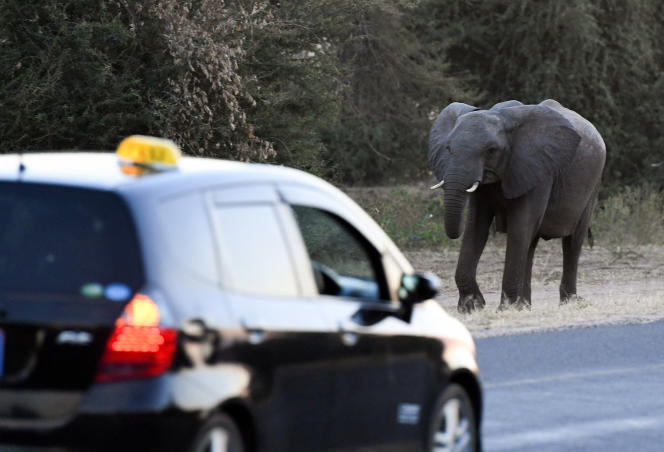In the north-east of Namibia, the small Sobbe corridor is only a modest project, a laboratory of ideas, but it nourishes here the hopes of bringing out an innovative solution for the protection of the most endangered wild species. . This 20-kilometre-long strip of land connects Mudumu National Park to the Zambezi Forest Reserve which opens further north to the Kavango-Zambezi Transfrontier Conservation Area, the largest terrestrial protected area in the world, 520,000 square kilometers straddling Botswana, Zambia, Zimbabwe, Angola and Namibia.
The preservation of a handful of corridors, including that of Sobbe, is essential to allow elephants to make their long migrations during the dry season from April to November. Mobility within these vast expanses is also valuable in facilitating the adaptation of wildlife to the consequences of climate change.
But how do you convince local people not to settle there and find ways to compensate them? In 2018, a contract for the protection of the corridor was signed between the conservancy (community conservation area) of Sobbe and the South African company Distell. The company, which produces the Amarula liqueur, whose logo is a pachyderm, paid 150,000 Namibian dollars (about 10,000 euros) to the community organization which brings together a thousand people against the latter’s commitment not to not build houses or extend their fields or pastures within the corridor.
Each year, if the integrity of the precisely demarcated territory is preserved, an annuity of 50,000 Namibian dollars is paid. Satellite images and camera traps make it possible to verify this by monitoring the state of the plant cover and the density of circulating fauna. The value of this compensation was calculated by attempting to assess the financial loss suffered by the populations deprived of the land.
Trophy hunt criticized
“It is difficult to put a price on the preservation of these habitats. It must be both sufficient to reward communities who live at their own risk and peril cohabitation with wildlife and acceptable to those who would be likely to pay,” explains Richard Diggle, who leads the Namibia office of the Global Fund for Nature (WWF) the reflection on these “payments for conservation”, whose principles are inspired by payments for ecosystem services. The WWF has been supporting the community conservation program carried out here through the conservancies for thirty years.
The need to mobilize stable sources of funding has become all the more urgent since the start of the Covid-19 pandemic. Revenues from tourism have collapsed. Trophy hunting, on which Namibia also relies to finance its environmental policy, is also increasingly criticized in Western countries where several governments like the United Kingdom have decided to ban their import.
Richard Diggle, however, is optimistic: “Billions of dollars are spent on conservation around the world every year. Our project is to capture a small part of it to improve the living conditions of the communities on the front line. »
The decisions taken at the last United Nations climate conference in Glasgow in November 2021 give, according to him, good reasons for hope. “COP26 is an important milestone. For the first time, governments have recognized the importance of preserving ecosystems and biodiversity to combat climate change. It has thus been recorded that biodiversity, like carbon, has a price”, explains the expert, imagining a new market intended for companies with environmental and social commitments, but also for individuals.
Safeguarding emblematic species
Namibia has in any case already prepared its marketing strategy by bringing together different “payments for conservation” projects under the label of Namibian Wildlife Credits (“credits for Namibian wildlife”). The trademark was registered with the Intellectual and Industrial Property Authority, a national body, by the Community Conservation Fund created to receive the capital. Building on Sobbe’s experience, several projects involve corridors. Others aim to save emblematic species such as the desert elephants of the Kunene region or the lions of Chobe.
A study was even carried out by a researcher from Oxford University to explore the potential benefits of using cryptocurrency and blockchain to minimize transaction costs and corruption risks. At this stage, the idea is considered inconclusive by the author, due in particular to the difficulty for the communities to master such a complex technology.














